
Illinois wine refers to any wine that is made from grapes grown in the U.S. state of Illinois. In 2006, Shawnee Hills, in southern Illinois, was named the state's first American Viticultural Area. As of 2008, there were 79 wineries in Illinois, utilizing approximately 1,100 acres (4.5 km2) of vines.

New York wine refers to wine made from grapes grown in the U.S. state of New York. New York ranks third in grape production by volume after California and Washington. 83% of New York's grape area is Vitis labrusca varieties. The rest is split almost equally between Vitis vinifera and French hybrids.

Ontario wine is Canadian wine produced in the province of Ontario. The province has three official wine-growing regions, the Niagara Peninsula, the north shore of Lake Erie, and Prince Edward County, although wineries also exist in other regions in Ontario. Approximately two-thirds of Canada's vineyard acreage is situated in Ontario, with over 150 vineyards spread across 6,900 hectares. As a result, the province is the country's largest producer of wine, accounting for 62 per cent of Canadian wine production, and 68 per cent of all Canadian wine exports.

Sonoma County wine is wine made in Sonoma County, California, in the United States.
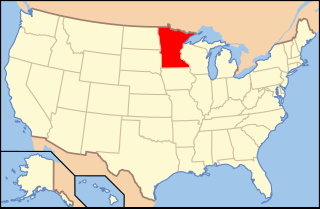
Minnesota wine refers to wine made from grapes grown in the U.S. state of Minnesota. Minnesota is part of the largest American Viticultural Area (AVA), the Upper Mississippi River Valley AVA, which includes southwest Wisconsin, southeast Minnesota, northeast Iowa, and northwest Illinois. The state also has a smaller designated American Viticultural Areas, the Alexandria Lakes AVA. Minnesota is a very cold climate for viticulture and many grape varieties require protection from the winter weather by being buried under soil for the season. Minnesota is home to extensive research on cold-hardy French hybrid and other grape varieties.

Massachusetts wine refers to wine made from grapes grown in the U.S. state of Massachusetts. Most of the wine grape vineyards and wineries in Massachusetts are located in the southern half of the state, within the boundaries of the Southeastern New England AVA. Although the coastal conditions moderate the cold climate, many wineries rely upon cold-hardy French hybrid varietals like Seyval, Vidal, and Marechal Foch. There are over 55 wineries in Massachusetts, and one designated American Viticultural Area, the Martha's Vineyard AVA, located entirely within the boundaries of the state.

Pennsylvania wine refers to wine made from grapes grown in the Commonwealth of Pennsylvania in the United States.

Wisconsin wine refers to wine made from grapes grown in the U.S. state of Wisconsin. Wisconsin is part of the largest American Viticultural Area (AVA), the Upper Mississippi Valley AVA, which includes southwest Wisconsin, southeast Minnesota, northeast Iowa, and northwest Illinois. The state also has two smaller designated American Viticultural Areas, the Lake Wisconsin AVA and the Wisconsin Ledge AVA.
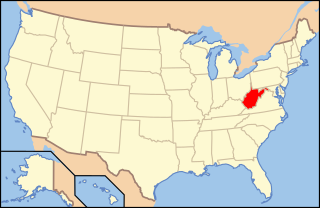
West Virginia wine refers to wine made from grapes grown in the U.S. state of West Virginia. West Virginia has 11 wineries located throughout the state, including three designated American Viticultural Areas. Because of the state's cold winter climate, most producers focus on French hybrid grape varieties. The most successful Vitis vinifera plantings are Riesling in the northeast portion of the state.

Oklahoma wine refers to wine made from grapes grown in the U.S. state of Oklahoma. Wine production was a significant component of the Oklahoma agricultural economy in the 1920s. The industry was destroyed by the Dust Bowl of the 1930s and the introduction of Prohibition in the United States. Oklahoma currently has about 52 wineries. Most of the wineries are located in Green Country, Lincoln county and surrounding areas in east central Oklahoma, Central Oklahoma and Southwest Oklahoma.

Connecticut wine refers to wine made from grapes and other fruit grown in the U.S. state of Connecticut. The modern wine industry in Connecticut began with the passage of the Connecticut Winery Act in 1978. The wineries in Connecticut are located throughout the state, including in the three designated American Viticultural Areas in the state. The climate in the coastal region near Long Island Sound and the Connecticut River valley tends to be warmer than the highlands in the eastern and western sides of the state.
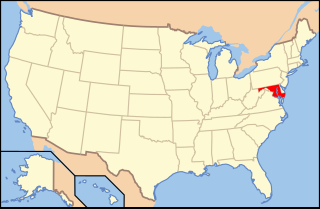
Maryland wine is wine made in the U.S. state of Maryland. The industry has grown rapidly since the first winery in Maryland, Boordy Vineyards, opened in 1945. It is estimated that the industry contributes $50 million annually to the Maryland economy.

Nebraska wine is wine made from grapes grown in the U.S. state of Nebraska. Nebraska's oldest winery was founded in 1994, and about thirty-five commercial wineries operate across the state. Wine quality varies across the state, however several wineries have won Best of Show titles during the States first 25 years of commercial wine production. Five of those titles were won with wines made of the states #1 wine produced from the Variety Edelweiss. Other wins were made with a dry Brianna, Vignole and a Marechel Foch Rose' wine. The vast majority of these wineries are small and sell most of their wine to tourists who visit the winery in person. The University of Nebraska–Lincoln has a program in viticulture. There are no designated American Viticultural Areas in Nebraska.
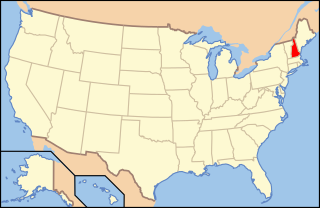
New Hampshire wine refers to wine made from grapes grown in the U.S. state of New Hampshire. The wine industry in New Hampshire began in 1994 when two wineries, Jewell Towne Vineyards and Flag Hill Winery, each produced their first vintages from locally grown grapes. Candia Vineyards started their test plantings in 1992, and full planting in 1998. New Hampshire continues to be growing wine-producing state, with new commercial wineries opening. The state currently has no American Viticultural Areas.

Maine wine is made from fruit grown in the U.S. state of Maine. Most is made from fruit other than grapes, including apple, cranberry, and blueberry wines. A few wineries in Maine produce limited quantities of wine made from locally grown French hybrid grape varieties. Maine's climate is too cold for viticulture. The first winery in Maine, Bartlett Maine Estate Winery, was established in 1983.
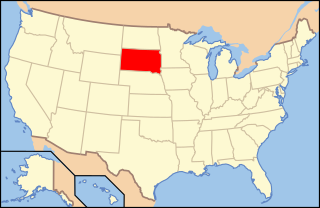
South Dakota wine refers to wine made from grapes grown in the U.S. state of South Dakota. Its region stretches between the latitudes of 42°N and 45°N sharing these latitudes with some of the most famous wine-producing areas in the world, including Bordeaux and Italy's Tuscany. South Dakota has a small wine industry, which must contend with extremes of heat in the summer and cold in the winter. The only grape species that naturally performs well in South Dakota is Vitis riparia, a species not generally used for wine production. The wineries in South Dakota have focused exclusively on cold-resistant French hybrid grapes. At present, there are no American Viticultural Areas (AVAs) in South Dakota, save for the state-level appellation.
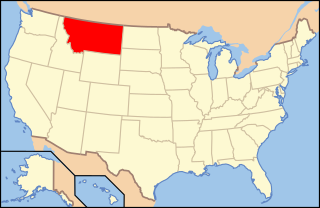
Montana wine refers to wine made from grapes grown in the U.S. state of Montana. There are eight wineries in Montana, with most producing wine from fruits other than grapes or from grapes grown in other states, such as California, Oregon, or Washington. The traditional grape varieties that appear to do best in the mountainous terroir of Montana are the grapes widely grown in the most northerly vineyards of France, with which Montana shares its latitudinal position of 42-49°N. There are no American Viticultural Areas in Montana.
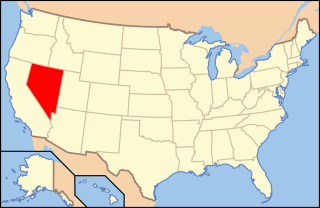
Nevada wine refers to wine made from grapes grown in the U.S. state of Nevada, where wine has been produced since 1990. There are currently no designated American Viticultural Areas in Nevada.

Nova Scotia wine is Canadian wine produced in the Canadian province of Nova Scotia. Nova Scotia's wineries are primarily organized under the Wine Association of Nova Scotia, though not all wineries are members. The industry began in the late 1970s with the original Grand Pré Winery in the Annapolis Valley of Nova Scotia.




















